Editorial: "Rise Peter, Kill and Eat"
by Robert Ellwood
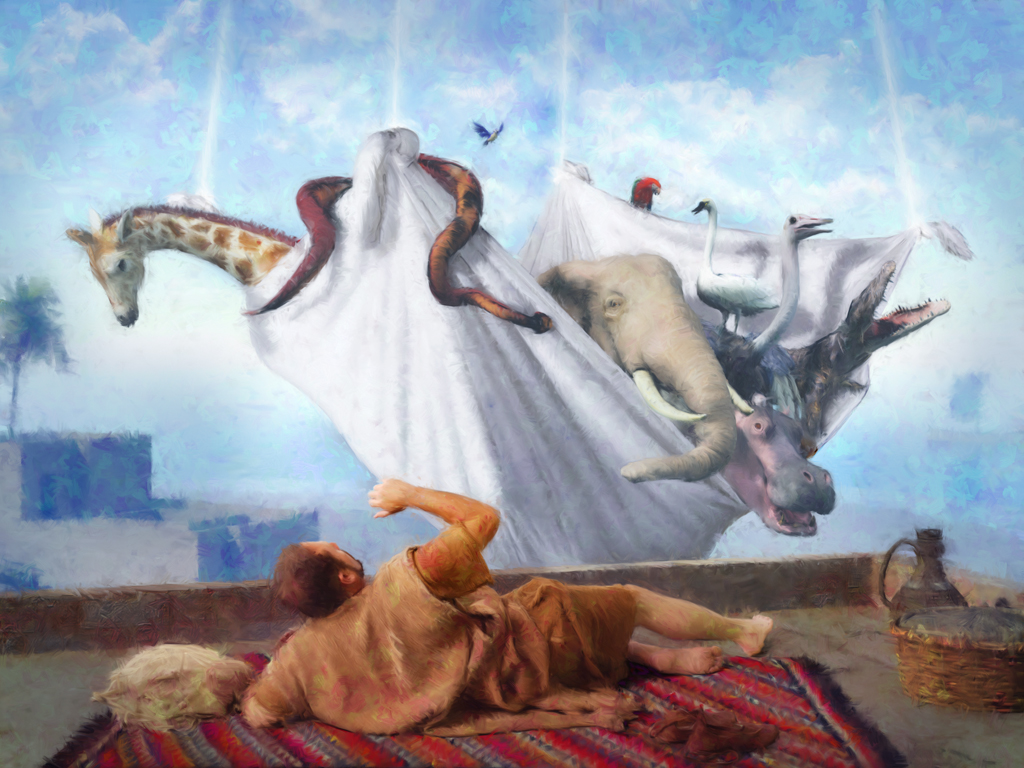
Among the biblical passages most likely to be presented to Christian vegetarians by unconvinced fellow Christians is the narrative in Acts, chapter 10, of Peter's relation with the Roman centurion Cornelius. It tells of the apostle's vision of a sheet lowered down from heaven containing all kinds of animals, including reptiles and birds, with the divine command, "Rise, Peter, kill and eat." The apparent message is that in doing so, Peter would be only doing God's will; therefore, consuming animal flesh must be no sin but rather in accord with the divine plan.
The Story
Let us look at the story in more detail. We are told that Cornelius was stationed in Caesarea, the Roman administrative capital of Palestine. Cornelius, as an officer of the "Italian Cohort," was probably a Roman citizen from Italy, and apparently a man of considerable means and influence. Moreover he was "a devout man who feared God with all his household, gave alms liberally to the people, and prayed constantly to God." As a "God-fearer," Cornelius was sympathetic to Judaism and the Jewish God, if not a full-fledged proselyte. (Considering the extreme brutality of Roman colonial rule, a centurion sympathetic to Judaism would have been comparable to an officer in the 1940s German Wehrmacht helping fugitive Jews. There weren't many.) This Cornelius received a vision telling him to invite to his house a man called Peter, who was then residing in nearby Joppa in the home of Simon, a tanner.
The next day, as the envoys from Cornelius were coming to summon Peter, the latter went onto the housetop to pray, and:
[He] became hungry and desired something to eat; but while they were preparing it, he fell into a trance and saw the heaven opened, and something descending, like a great sheet, let down by four corners upon the earth. In it were all kinds of animals and reptiles and birds of the air. And there came a voice to him, "Rise, Peter; kill and eat." But Peter said, "No, Lord; for I have never eaten anything that is common or unclean." And the voice came to him again a second time, "What God has cleansed, you must not call common." This happened three times, and the thing was taken up at once to heaven.
So when the men sent by the centurion arrived and delivered their message, Peter agreed to go with them. Finding many of the officer's relatives and close friends gathered in the house to hear him, Peter opened by saying:
"You yourselves know how unlawful it is for a Jew to associate with or to visit any one of another nation; but God has shown me that I should not call any man common or unclean. So when I was sent for, I came without objection. . . . Truly I perceive that God shows no partiality, but in every nation any one who fears him and does what is right is acceptable to him."
He then continued in his testimony to declare that God through Jesus Christ had opened the work of the Holy Spirit to all people who believe in him. When the Holy Spirit then came upon this assembly, Peter declared,
"Can any one forbid water for baptizing these people who have received the Holy Spirit just as we have?" "And he commanded them to be baptized in the name of Jesus Christ."
In the next chapter of Acts, we find that when Peter went up to Jerusalem to meet the elders of the church there, those of the strict "circumcision party" criticized him, saying, "Why did you go to the uncircumcised men and eat with them?" But the newly-enlightened evangelist repeated to them the story of the vision of the lowered sheet, and of his favorable experience with the Holy Spirit and baptism in the house of the believing Roman.
Questions for Today's Readers
Clearly the chief object of this episode is not to justify eating flesh, whether clean or unclean according to the Jewish law; in this dreamlike trance vision, it does not seem that Peter actually did kill and eat, but only got the metaphorical main message. The tripled image was obviously like a parable intended to justify taking the Good News equally to persons of all nations, Jew or Gentile, for God shows no favoritism. Nonetheless, vege-sceptics can hardly be faulted for seeing this story as, at first glance, divinely authorizing us to kill and eat any animal, kosher or not.
Nonetheless, there are certain questions one might wish to ask such critics. First: if the sheet contained dogs and cats, including your own companion animals, would you kill and eat them? There are nations in the world in which that would be quite acceptable. If you would draw the line there, you would -- in reverse, as it were -- be demarcating clean and unclean animals, saying some are too precious to devour. This would be acknowledging that our eating choices are cultural as well as generic.
Second, if the sheet contained a whole factory farm with its reeking, horrific conditions, would you kill and eat? One is hard put to see its poor filth-caked victims as in any way representing divine cleansing, which was the point of the parable. Killing in this case would mean not merely a moral choice to eat animals as such, but approval of keeping animals in great physical suffering and soul-killing confinement, as most readers of The Peaceable Table are well aware. If you would not do it, this would mean drawing a moral as well as a cultural line.
Third, do you kill with your own hands? That was the (symbolic) command given to Peter, but the vast majority of those who eat animal flesh do not actually kill those they eat. Not a few would find that job too distasteful to perform personally; they are content to hire others far away to do it for them. But if you would not really do the killing yourself, strictly speaking you cannot claim this parable as your dietary justification, since that is what it commands.
The Path of Love for All
The bottom line is that Christianity (and Judaism its mother) is not a religion merely of literal adherence to ancient texts, but of listening for and heeding God's word of love in the old and in the new; it is openness to grace. As James Russell Lowell put it in "The Present Crisis," "They must upward still and onward / Who would keep abreast of truth." The point is not just to stretch as far as possible what is permitted short of actual sin, but to attune ourselves to where God's grace is leading us today, and to follow what is most decisively the path of love for all God's children, indeed for all God's creation. For many of us, in light of what we know of today's conditions--especially the extreme crowding and the atrocities caused by rapid assembly-line killing-- that means a plant-based diet.
We can take Peter's realization that nothing God has cleansed remains unclean, and bring it to a profound understanding that all creation is now clean--but as Paul said, it "is groaning in travail together until now, waiting for adoption as [daughters and] sons, for the redemption of our bodies (Rom. 8:22-23)." Even today, all beings deserve loving respect, and opportunity to fulfill the life of the Spirit coming to birth in each one.
Unset Gems
If the Divine Creator [of animals] gave them legs, is it not blasphemy to shut them in crates where they are unable to walk?--Al-Hafiz Masri Contributed by Idarmis Rodriguez
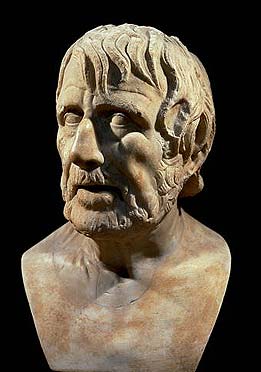 "It is compassion that recognizes the true nature of reality, that of interconnected heart and soul."
"It is compassion that recognizes the true nature of reality, that of interconnected heart and soul."
--Robert Ellwood
"What with our hooks, snares, nets, and dogs, we are at war with all living creatures . . . and all this is to gratify a fantastical palate."
--Lucius Annaeus Seneca (4 BC-AD 65)
--Contributed by Lorena Mucke
News Notes
Sow Crates Going Out Down South
Thanks to a vigorous campaign by Animals Australia and Brightside Farm Sanctuary, the government of Tasmania, southernmost (island) state of Australia, announced that it is phasing out crates for pregnant pigs. The ban will take final effect in 2017, but the change will be underway well before that. See Tasmania
Vegetarians Suffer Less Depression
According to a new study in Nutrition Journal, vegetarians have lower instances of depression. The study, which comprised 60 vegetarians and 78 flesh-eaters, found that vegetarians scored significantly better on standardized mood tests that measured depression, anxiety, and stress. See Mental Health and Vegetarians Happier
--Contributed by Lorena Mucke and Robert Ellwood
Deer Hunt Banned in Ireland
After tireless campaigning by several groups--Irish Council Against Blood Sports, Animal Rights Action Network, the Green Party, Quaker Concern for Animals, and others, the 150-year-old Ward Union Stag Hunt has been banned. Several weeks of intense media debate brought the issue to virtually everyone in Ireland--and compassion prevailed. See Ban
--Contributed by Marian Hussenbux
A Glimpse of the Peaceable Kingdom
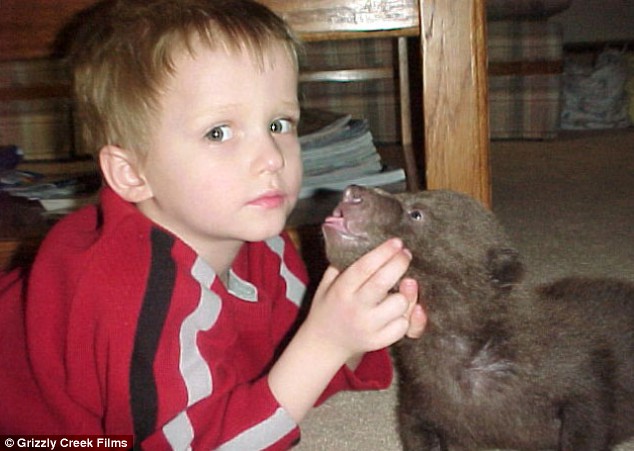
Human Adopts Bear
Seven years ago, naturalist Casey Anderson rescued two orphaned grizzly bear cubs in Alaska. One died, but the other, named Brutus, was raised by Casey. Brutus is now an 800-pound gentle giant who has become a member of the Anderson family, coming and going at will. He is shown here as an ursine toddler with a very young human. Brutus even served as "best bear" at Casey's wedding. See Brutus
.
--Contributed by Maria Elena Nava
Caution--Bears in the wild, especially grizzlies, look cuddly but are unpredictable; cute cubs may have an alarmed mother nearby. Don't befriend a bear unless you are a naturalist and know exactly what you are doing; in case of need, send Light and get expert guidance.
Letters
Dear Peaceable Friends,
Just read your latest PT. . . . I liked the movie reviews of Furry Vengeance and How to Train Your Dragon. I usually cringe when any animal is depicted as a human-like creature in a fur costume with slightly animal-like inclinations. Often the best--and most interesting--characteristics of animals are those that are odd and different from us humans.
It's a shame that Mark Twain's daughter Susy Clemens lived only a short life. Thank you for bringing her to our attention.
Blessings,
Linda Terry
Yes, Susy died at only 24 of spinal meningitis. Her equally compassionate sister Jane Clemens also died in her twenties, in an epileptic seizure.
Dear Peaceable Friends,
I appreciated your editorial "The Animals Are Waiting." If we believe the kingdom of God is within us, the Peaceable Kingdom is already realized, though perhaps not so easy to see. Do we believe in That of God in everyone? Do we believe we are not these bodies, but the soul or spirit within that God created to love him?
In my opinion, because we are not the controllers, we cannot hasten the kingdom of God, but we can realize it at any time by awareness / knowledge of Truth.
Is the ladder in Jacob's dream evolutionary?
Peace, love, and joy,
Gerald Niles
Katherine Hulme opined that Jacob's ladder is indeed evolutionary.
Book Review: The Horse Boy
Rupert Isaacson, The Horse Boy: A Father's Quest to Heal his Son. New York: Little, Brown. 2009. 357 pages, color plates. $24.99 hardcover.
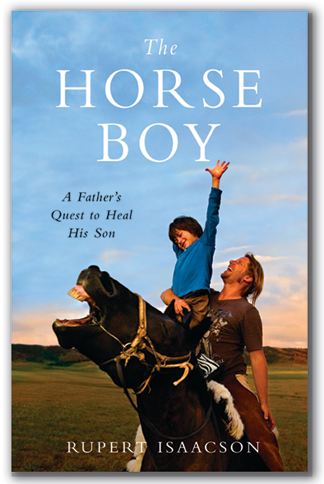 This unusual and remarkable book tells the story of how animals, especially horses, and shamans combined to bring the author's son, Rowan, out of the psychic black hole of autism.
This unusual and remarkable book tells the story of how animals, especially horses, and shamans combined to bring the author's son, Rowan, out of the psychic black hole of autism.
A little background first. Rupert Isaacson, raised in England of South African/ Zimbabwean parents, at the time of the narrative was a journalist and travel writer living in Austin, Texas, with his California-born wife Kristin, a psychology professor at the University of Texas. Over a varied earlier career, Rupert had taught riding in England (which had brought him in close touch with the country's fox-hunting set), and had worked with the San ("Bushmen") in southern Africa in defending their land against exploitative mining companies. This idealistic labor had put Isaacson, and little Rowan, in contact with African shamans; the author also acquainted himself with a number of Native American healers over the course of his travels.
As the child grew, Rupert and Kristin found themselves charged with the unimaginably stressful (unimaginable except for those who have been there) task of dealing with an autistic son. At three, Rowan was not toilet trained, was given to explosive tantrums, and was almost beyond communication, even though he seemed exceptionally bright. (He could remember the names of numerous animals among his books and toys, could read words ahead of his age, and organize his toys in patterns, but could barely speak in sentences.)
Rowan was taken, of course, to various medical specialists and put in a special school, which proved to be little more than custodial. Nothing seemed to help. Fortunately, they lived on the outskirts of Austin near facilities for the riding Rupert still loved. To his surprise and delight, he found that Rowan was changed when with horses and other animals. He calmed down, hugged them, loved riding with his father, and especially loved a horse named, Betsy, who seemed to understand him in turn, going gently with the boy and always greeting him eagerly.
The Isaacsons consulted with Temple Grandin, professor of animal sciences at Colorado State University, herself an adult autist, who had written a best-selling book explaining that animals and autists both thought in pictures rather than words. Moreover, they profoundly understand each other, and autistic children can make connections such as Rowan and Betsy made that seem deeper than links with other humans. "Because animals think the same way -- visually," said Grandin, "autistic people often connect well with animals. When they're young they sometimes communicate what they want to say to their fellow humans through the medium of an animal, especially an animal they're close to." (p. 59)
Shamans also made a difference. San and American shamans did rites for Rowan in the course of visits, and Rupert found his son greatly improved in their presence, though the cure did not last. Then a striking idea hit him. Why not take Rowan to Mongolia, famous for horses and shamans alike? Grandin approved, and after considerable research the plan was developed.
As a travel writer, Isaacson was able to get a grant for the trip, and for a crew of cinema photographers to accompany the family to document the experience. Finally, they were off on a long flight, via London and Moscow, to Ulaanbaatar, capital of Mongolia, and finally to the Dukha tribe, a "reindeer" (and also horse) people who lived in the far north of Mongolia. (They are also located in southern Siberia, and in what was once Tannu Tuva, a tiny state between Mongolia and Siberia which had fascinated me as a boy as I pasted its stamps into my collection.)
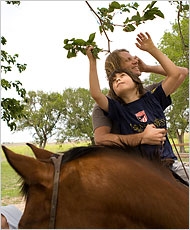 The family's many adventures in Mongolia cannot be recited here; read the book. Suffice it to say that among the Dukha, Rowan made friends with horses, reindeer, and even Mongol children. Moreover, he underwent a ceremony conducted by a certain Ghoste, reputedly the greatest shaman in all Mongolia. After it, as the holy man had promised, the boy had virtually no more tantrums or toilet "accidents," and was well on the way to normality, though still -- like Temple Grandin -- retaining the special inner vision and sensitivities of an autist.
The family's many adventures in Mongolia cannot be recited here; read the book. Suffice it to say that among the Dukha, Rowan made friends with horses, reindeer, and even Mongol children. Moreover, he underwent a ceremony conducted by a certain Ghoste, reputedly the greatest shaman in all Mongolia. After it, as the holy man had promised, the boy had virtually no more tantrums or toilet "accidents," and was well on the way to normality, though still -- like Temple Grandin -- retaining the special inner vision and sensitivities of an autist.
A word must be said about diet, animals, and their life and death in the book. Kristin, a western Buddhist, was vegetarian; Rupert was not, though he had a powerful lifelong aversion to milk and eggs. It was a great trial to him, then, that in Mongolia they were constantly served the national drink of mare's milk, sometimes mixed with vodka, sometimes fermented as the potent local liquor called airag. Despite nausea, he felt with so much at stake he had to force down enough not to offend.
A reindeer was killed--"sacrificed"--as part of the shamanic ceremony which healed Rowan; parts of the flesh were mixed into a medicinal "soup" that Rowan at first violently rejected. Then, after a taste allowed its power to begin working, he took it quietly and began to change dramatically. Rupert prayed fervent thanks to the animal's soul after the favorable results of the rite were evident. It is morally disturbing, to say the least, that the deliberate killing of a sensitive being against her will should lead to abundant life for another. Doubtless many people would conclude that the results justified the killing, since "it was only an animal." But quite possibly human sacrifice would have worked too--and scarcely anyone nowadays would accept such an act.
The advice of a shaman could also work against violence. A Native American shaman had once told Rupert that to receive the blessings he sought he must sacrifice his participation in the English "sport" of fox-hunting, the addictive thrill of which he had known. He gave it up. To complicate matters in this area, while autistic the boy would eat practically nothing but bacon, an appetite his parents felt they had no choice but to favor. Whether this changed after his shamanistic cure is not stated.
This is a strange book which leaves open disquieting questions. It represents a venture into an archaic world which undoubtedly has its own ways of access to the powers of the animal realm and of the universe. Yet to us its knowledge and healing skills may seem as long forgotten as its gods. The wisdom of that other humanity is so alien to the modernity we have created all around us as to sound like haunting fairy tales or even "superstition." Yet accounts such as Isaacson's, wherein somehow it seems to work, leave us wondering. The author likes to remind readers that this "fantasy novel" world is found not only in such "ends of the earth" as Mongolia, but was also in that of our ancestors hundreds of centuries back. Indeed, for Isaacson part of the magic of Mongolia seems to lie in his belief that here lay not only the ultimate origin of his European racial lineage, but also the evolution and domestication of the horse. Whether or not this is strictly correct, undoubtedly both originated somewhere on the vast steppes of central Asia. These notions reflect a theme very important in shamanism and religion, a theme underlying mythology and pilgrimage around the world, that going to a place of beginnings is no less a going to the source of ultimate power.
Part of that power was our distant ancestors' profound closeness to animals, almost an autist-like ability to think with them. That relation was both cruel and kind, as were their own lives. It could nourish, it could kill, and and it could heal.
--Robert Ellwood
Marmaduke. A 20th Century Fox film. Directed by John Davis. Owen Wilson as the voice of Marmaduke, George Lopez as that of Carlos, Kiefer Sutherland as Bosco, Emma Stone as Mazie, Lee Pace as Phil Winslow, Judy Green as Debbie Winslow, Finley Jacobsen as Brian Winslow. 2010
 Marmaduke, for those not familiar with the comic strip, is a Great Dane who resides with a family named Winslow, a dog whose gigantic size and assumption that he is virtually a human member of the family leads to amusing misadventures.
Marmaduke, for those not familiar with the comic strip, is a Great Dane who resides with a family named Winslow, a dog whose gigantic size and assumption that he is virtually a human member of the family leads to amusing misadventures.
The Winslows--father, mother, teenage daughter, preteen son, cat (a Balinese named Carlos) and Marmaduke move from Kansas to California in search of a great job opportunity. The family has trouble adjusting to the new situation. Father Phil (played by Lee Pace, who looks like a young Nicholas Cage) is terribly uncomfortable with his domineering and eccentric new boss. The teenage daughter Debbie is snubbed by the local girls. Son Brian is assigned to play soccer, but he would much rather skateboard. Marmaduke has a very hard time fitting into the local canine pecking order, which is dominated by a bully named Bosco (voiced by Kiefer Sutherland at his most villainous). A dog named Mazie forms a crush on Marmaduke, who does not reciprocate, being interested instead in Bosco's canine girlfriend.
Seeking to overcome his difficulties, Marmaduke comes up with several ideas, all of them bad. The worst one is to persuade his cat friend Carlos to allow himself to be abused by Marmaduke, so the other dogs will think better of the non-pedigreed Great Dane. The scene that follows is disgusting and painful. (In real life, it would not work; most aggressive dogs can push cats around without any special cunning, skills or strength. However, the very stupid deception does work in the film.
Phil has a brilliant idea to hold a surfing contest for dogs. Marmaduke wins, thanks to amazing good luck and rather unconvincing visual special effects. Bosco feels he has been robbed, and he does have a point-- Marmaduke accidentally bumped him off the surfboard. Bosco attacks Marmaduke - but the big dog, tired of running, wins the fight very quickly. Phil's boss blames Marmaduke for the disturbance. This is both an injustice and a breach of logic, as Bosco was clearly the aggressor.
But Bosco, though a bully, is not a fool. He crashes Marmaduke's big party and exposes the deception involving Carlos. Marmaduke has a fall from grace - well-deserved, as Carlos points out. The other dogs leave in hurry, leaving a big mess behind for which Marmaduke is rightly blamed. He is banished to the yard; torrential rain falls. Feeling himself disgraced and unloved, Marmaduke runs away-- another big mistake. Mazie , who still loves him, helps to look for him. Just at the moment when the two dogs are about to be reunited, a huge sinkhole opens under their paws. This arbitrary disaster turns into a Deus ex machina gimmick: Marmaduke saves Mazie, Phil saves Marmaduke. Man and dog become celebrities; the family is reunited and reconciled; Mazie and Marmaduke become a couple. All the dogs dance to "That's What I Like About You," ending the movie with a big happy number.
In the poster advertising the movie, Carlos is shown as all white, but in the movie itself he has a grey face, being a Balinese. A Balinese named Carlos, who speaks with a thick Mexican accent! But these are minor points. The main problem is that, although Marmaduke is punished for his deception, and for his betrayal of Carlos, we do not really have a proper moment of reconciliation and forgiveness between the cat and the dog. This is only one of many flaws in the movie, which lacks too much in logic and in emotional rightness. I can only recommend this film to people who love dogs so much that they are willing to overlook the defects. (Personally, I would like it a lot better if there were more cats).
-Benjamin Urrutia
Book Review: Second Nature
Second Nature : The Inner Lives of Animals. By Jonathan Balcombe. Foreword by J. M. Coetzee, Nobel Prize in Literature. New York: MacMillan, 2010. 242 pages hardcover. $27.
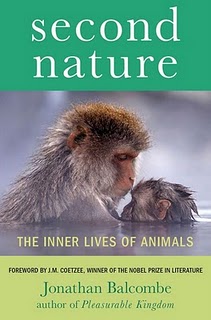 Human beings have long justified their oppression of animals by claiming superiority to them in various ways. This book is filled with amazing, little-known facts that, if better known, would do much to change that oppressive relationship.
Human beings have long justified their oppression of animals by claiming superiority to them in various ways. This book is filled with amazing, little-known facts that, if better known, would do much to change that oppressive relationship.
Particularly in regard to moral sensitivity and intellectual power, perhaps the most important of these areas of assumed human superiority, Balcombe describes instances in which animals have in fact won out handsomely over homo sapiens. He tells of a number-memorizing computer game in which Ayumu the chimp did three times as well as Ben Pridmore, a British memory champ. True, all chimps are not as smart as Ayumu, but in general, "the average chimp scores twice as well as the average human on this short-term memory task." More impressive yet is the performance of rats in an experiment in which experimenters deliberately tempted some of them to get food by delivering electric shocks to other rats. They refused. With much less motivation, in the famous Milgram experiments, humans have been shown to be willing to torture fellow humans with supposedly near-lethal electric shocks-- simply because an authority figure ordered them to do it. Such moral and intellectual superiority of animals should be enough to cause Descartes and his ilk to gyre and gimble in their graves.
It is not only in memory and morality that other animals surpass humans, but in their sensitivity to aspects of the physical world that are relevant to their welfare, their surrounding Umwelt. Bats use this capacity to connect with offspring against seemingly impossible odds. On pages 9 through 12, we read a description of how individual mother bats can find their individual babies in a pitch-black giant cave, where hundreds of thousands, maybe over a million, baby bats are clamoring for their mothers. It is hard to imagine how any humans, no matter how devoted to their offspring, could duplicate this feat.
Balcombe examines, and refutes, the all-too-common claim that animals behave "just on instinct" (pp. 27-30); rather they show remarkable flexibility. For example, killdeers will fake a broken wing to lure certain predators away from their nests, but in response to the threat posed by cattle, who are benign but might step on their nests, the killdeer are flexible enough to give warning cries instead of putting on a useless act. Similarly, beavers build dams using certain instinctive techniques, but their materials vary according to what is available; they may adapt human-made dams to their purposes; they may build nests in abandoned buildings. "With the overwhelming accumulation of evidence showing that animals think and act flexibly in response to changes in their surroundings, it's time to shelve the old dogma," (page 29) says the author.
Balcombe devotes three chapters to the remarkable achievements of animals in regard to coexistence, giving many instances of the kinds of services animals perform on behalf of others of their kind. He gives examples of many kinds of assistance, including midwifery, wet-nursing, and babysitting. Among Rodriguez fruit bats, a midwife bat will help an expectant mother in several ways for three hours as she is giving birth, including intermittently wrapping her wings about the laboring mother and grooming the newborn pup. Evening bats sometimes nurse the babies of other bats. Various species of mammals, from African elephants to marmosets, babysit for other parents of their kind. Even among fish, namely the cichlids of Lake Tanganyika, five or six babysitters of both sexes will guard the nest of a breeding pair. Is all such apparently caring behavior simply selfishness in disguise, as some ethologists maintain? For instance, are bats who nurse others' babies simply "dumping milk" for their own flying efficiency? Balcombe doubts it, pointing out that many helping actions give pleasure.
In the last chapter the author deals with the some of the big problems, both ethical and ecological, created by the human devouring of animal flesh, giving the frightening outlines and many examples. But he also describes the actions of countries that have made efforts to contain massive abuses, such as battery cages, by means of new laws that protect animals to some extent: the USA (he cites Proposition 2 in California), the European Union, Switzerland, etc. (Unfortunately Israel is not mentioned, though it is a leader in this area.)
In the long and horrifying history of human abuse of animals, Balcombe sees these and other signs of increasing sensitivity to them on the part of humans as evidence of a New Humanity. This is what he means by the Second Nature of his title: "An "emergent, less selfish worldview that grants animals the respect and consideration they are due. " page 200).
We strongly recommend this book, with its huge treasure trove of life-giving information, to all those who love animals and love the truth.
--Benjamin Urrutia and Gracia Fay Ellwood
Pioneer: Wulfstan, c. 1008 - 1095 C.E.
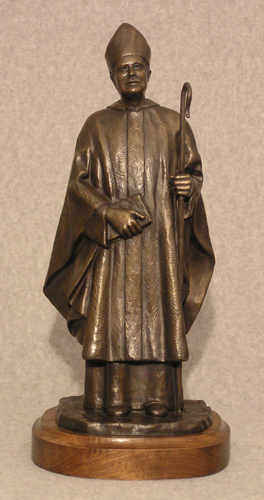 Wulfstan, a dedicated and caring churchman in violent and tumultuous times, was the child of a prominent yet pious Anglo-Saxon family. Wanting to serve God, he was ordained to the priesthood as a young man. Though offered a wealthy parish, his commitment to spirituality led him to enter a Benedictine monastery in Worcester instead. As part of that calling toward the higher levels of discipline and prayer, he developed an intense desire to live without inflicting suffering on any creature.
Wulfstan, a dedicated and caring churchman in violent and tumultuous times, was the child of a prominent yet pious Anglo-Saxon family. Wanting to serve God, he was ordained to the priesthood as a young man. Though offered a wealthy parish, his commitment to spirituality led him to enter a Benedictine monastery in Worcester instead. As part of that calling toward the higher levels of discipline and prayer, he developed an intense desire to live without inflicting suffering on any creature.
The crucial moment in this path toward non-violence came one day when he saw a cow being dragged toward slaughter near his chapel. A little later, as he was saying mass, he could smell the animal's flesh being roasted in the kitchen. It suddenly came to him that, if he ate the meat of such poor suffering beasts, he was acting contrary to the spiritual aspiration reflected in the mass, and indeed in the whole Christian life centered on love. Although in his youth he had eaten meat, he took a vow then and there never to eat the flesh of an animal again. Cases of abstinence from meat out of austere self-denial were well known in ancient and medieval times, but to be motivated primarily by compassion for the animals' suffering was much less common.
Wulfstan's awareness of human suffering was equally powerful, and his characteristic willingness to take practical action to curtail it was impressive. One example: while in the monastery, Wulfstan was for a time entrusted with the education of boys in the monastery school. He insisted that his charges – some no doubt of aristocratic background – personally carry dishes of food to the tables of the poor, and wait on them, as training in humility and loving service. Another instance anticipates the work of Wilberforce, Newton, (see PT 31 ) and other prophets 800-plus years later: Wulfstan, having become aware that the city of Bristol was a center for the shipment of slaves to the Vikings who then controlled Ireland, preached persistently against this shameful trade until the merchants of Bristol put a stop to it.
In 1062, just four years before the momentous Norman Conquest of England, Wulfstan was made bishop of Worcester. He set a high example of pastoral care in his diocese. After the invasion Wulfstan became a close associate of Lanfranc (King William's reforming Archbishop of Canterbury), and helped guide the English church as a whole through the exceedingly difficult challenges raised by the Conquest. In the end he was the only native English bishop not replaced by a continental during the invader's regime. Historians may debate whether that was owing to his personal holiness, his considerable political skill, or both. But one may imagine that, in the voiceless awareness of not a few English animals gazing up at his gentle features, Wulfstan was also special for quite another reason.
By all accounts Wulfstan was an exceptionally able and high-principled administrator, for whom there lay no conflict between compassion and competence. Power, which famously tends to corrupt, did not corrupt him but remained in service to love. His chaplain-biographer, the monk Coleman, tells us he was “neither lavish nor niggardly in the choice of clothes and in his general standard of living.” This suggests a path more like the Quaker ideal of simplicity than the sort of extreme rigor often seen in medieval saints. It also indicates Wulfstan's vegetarianism was an expression of real compassion rather than personal mortification. This point we would do well to keep before us today--there are still those who associate the meat-free way of life with a self-righteously ascetic and joykilling outlook. Coleman further informs us that the prelate was “always in good health” and lived to be 87, quite a venerable age for the eleventh century. His manner of living apparently helped to grace him with robust longevity far exceeding the average of those medieval lords and ecclesiastics who lived for power, war, the hunt, and/or the banquet table groaning with platters of flesh.
As was typical of medieval spirituality, shrines and prayers to Wulfstan appeared soon after his death. We could do far worse than find some part of our own minds in which to enshrine this wise and compassionate man. A bright light in the violence of the Dark Ages, Wulfstan can inspire us to disciplined and loving service to our animal friends still trapped in equally violent times.
--Robert Ellwood
Sources: Vegetarian Christian Saints by Holly Roberts, The Oxford Dictionary of Saints by David Hugh Farmer, and Wikipedia.
Recipes
Angela Suarez is on vacation. The July recipes were created for us by nutritionist Jennifer Raymond, our Pioneer in last month's PT.
Broccoli Salad
Makes about 6 servings
4 stalks of broccoli
4 green onions, chopped
½ cup dry roasted peanuts, chopped
½ cup golden raisins
¼ cup dried cranberries
Dressing:
1 tablespoon sugar
2 tablespoons seasoned rice vinegar
½ cup Vegenaise (or other vegan mayonnaise)
¼ tsp. black pepper
Peel broccoli stems and cut or break broccoli flowers into bite-sized pieces.
Place in a large bowl with green onions, peanuts, golden raisins, and dried cranberries.
Mix dressing ingredients in a small bowl and toss with vegetables to coat. Cover and chill until serving time.
What a fresh and delicious way to enjoy broccoli! This salad is quick to make and keeps well for several days.
--Jennifer Raymond
African Bean Soup
Makes about 2 quarts
3 tablespoons reduced-sodium soy sauce
1 onion, sliced
2 small sweet potatoes or yams, peeled and diced (about 2 cups)
1 large carrot, thinly sliced
1 celery stalk, thinly sliced
1 red bell pepper, diced
1 15-ounce can crushed tomatoes
1 quart vegetable broth or water
1 15-ounce can garbanzo beans, undrained
1/2 cup chopped fresh cilantro
3 tablespoons peanut butter
1-2 teaspoons curry powder
cooked brown rice for serving
Heat 1/2 cup of water and soy sauce in a large pot. Add onion and sweet potatoes and cook over high heat, stirring often, until onion is soft, about 5 minutes. Add carrot, celery, and pepper. Cover and cook 3 minutes, stirring occasionally. Add tomatoes, vegetable broth, garbanzo beans (including liquid), cilantro, peanut butter, and curry powder. Stir to mix, then cover and simmer until vegetables are fork tender, about 10 minutes.
To serve, place about 1/2 cup of cooked brown rice in a bowl and top it with a generous ladle of soup.
Sweet potatoes and peanuts are ingredients in many African dishes.
--Jennifer Raymond
Poetry: Katharine Tynan, 1861-1931
Larks

All day in exquisite air
The song [climbed] an invisible stair,
Flight on flight, story on story,
Into the dazzling glory.
There was no bird, only a singing,
Up in the glory, climbing and ringing,
Like a small golden cloud at even,
Trembling 'twixt earth and heaven.
I saw no staircase, winding, winding,
Up in the dazzle, sapphire and blinding,
Yet round by round, in exquisite air,
The song went up the stair.
The watercolor is by Chuck Clevenger. Permission to reproduce sought.
The Peaceable Table is
a project of the Animal Kinship Committee of Orange Grove Friends Meeting, Pasadena, California. It is intended to resume the witness of that excellent vehicle of the Friends
Vegetarian Society of North America, The Friendly
Vegetarian, which appeared quarterly between 1982 and
1995. Following its example, and sometimes borrowing from its
treasures, we publish articles for toe-in-the-water
vegetarians as well as long-term ones.
The journal is intended to be
interactive; contributions, including illustrations, are
invited for the next issue. Deadline for the August-September issue
will be Sept. 27, 2010. Send to graciafay@gmail.com
or 10 Krotona Hill, Ojai, CA 93023. We operate primarily
online in order to conserve trees and labor, but hard copy
is available for interested persons who are not online.
The latter are asked, if their funds permit, to donate $12 (USD) per year. Other
donations to offset the cost of advertising (in The Christian Century) are welcome.
Website: www.vegetarianfriends.net
Editor: Gracia Fay Ellwood
Book and Film Reviewers: Benjamin Urrutia & Robert Ellwood
Recipe Editor: Angela Suarez
NewsNotes Editors: Lorena Mucke and Marian Hussenbux
Proofreaders: Idarmis Rodriguez and Robert Ellwood
Technical Architect: Richard Scott Lancelot Ellwood

 "It is compassion that recognizes the true nature of reality, that of interconnected heart and soul."
"It is compassion that recognizes the true nature of reality, that of interconnected heart and soul."

 This unusual and remarkable book tells the story of how animals, especially horses, and shamans combined to bring the author's son, Rowan, out of the psychic black hole of autism.
This unusual and remarkable book tells the story of how animals, especially horses, and shamans combined to bring the author's son, Rowan, out of the psychic black hole of autism. The family's many adventures in Mongolia cannot be recited here; read the book. Suffice it to say that among the Dukha, Rowan made friends with horses, reindeer, and even Mongol children. Moreover, he underwent a ceremony conducted by a certain Ghoste, reputedly the greatest shaman in all Mongolia. After it, as the holy man had promised, the boy had virtually no more tantrums or toilet "accidents," and was well on the way to normality, though still -- like Temple Grandin -- retaining the special inner vision and sensitivities of an autist.
The family's many adventures in Mongolia cannot be recited here; read the book. Suffice it to say that among the Dukha, Rowan made friends with horses, reindeer, and even Mongol children. Moreover, he underwent a ceremony conducted by a certain Ghoste, reputedly the greatest shaman in all Mongolia. After it, as the holy man had promised, the boy had virtually no more tantrums or toilet "accidents," and was well on the way to normality, though still -- like Temple Grandin -- retaining the special inner vision and sensitivities of an autist. Marmaduke, for those not familiar with the comic strip, is a Great Dane who resides with a family named Winslow, a dog whose gigantic size and assumption that he is virtually a human member of the family leads to amusing misadventures.
Marmaduke, for those not familiar with the comic strip, is a Great Dane who resides with a family named Winslow, a dog whose gigantic size and assumption that he is virtually a human member of the family leads to amusing misadventures. Human beings have long justified their oppression of animals by claiming superiority to them in various ways. This book is filled with amazing, little-known facts that, if better known, would do much to change that oppressive relationship.
Human beings have long justified their oppression of animals by claiming superiority to them in various ways. This book is filled with amazing, little-known facts that, if better known, would do much to change that oppressive relationship.  Wulfstan, a dedicated and caring churchman in violent and tumultuous times, was the child of a prominent yet pious Anglo-Saxon family. Wanting to serve God, he was ordained to the priesthood as a young man. Though offered a wealthy parish, his commitment to spirituality led him to enter a Benedictine monastery in Worcester instead. As part of that calling toward the higher levels of discipline and prayer, he developed an intense desire to live without inflicting suffering on any creature.
Wulfstan, a dedicated and caring churchman in violent and tumultuous times, was the child of a prominent yet pious Anglo-Saxon family. Wanting to serve God, he was ordained to the priesthood as a young man. Though offered a wealthy parish, his commitment to spirituality led him to enter a Benedictine monastery in Worcester instead. As part of that calling toward the higher levels of discipline and prayer, he developed an intense desire to live without inflicting suffering on any creature.